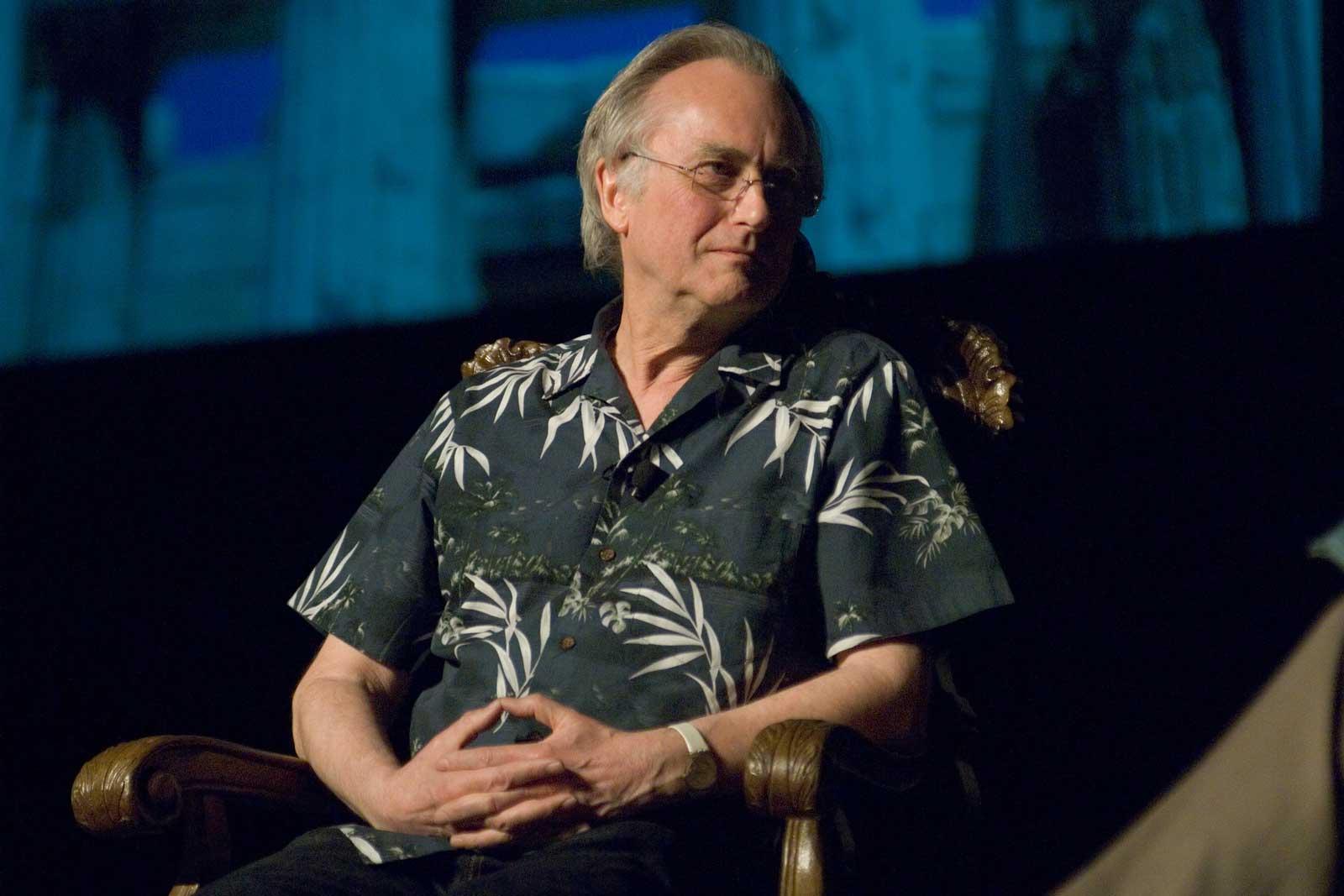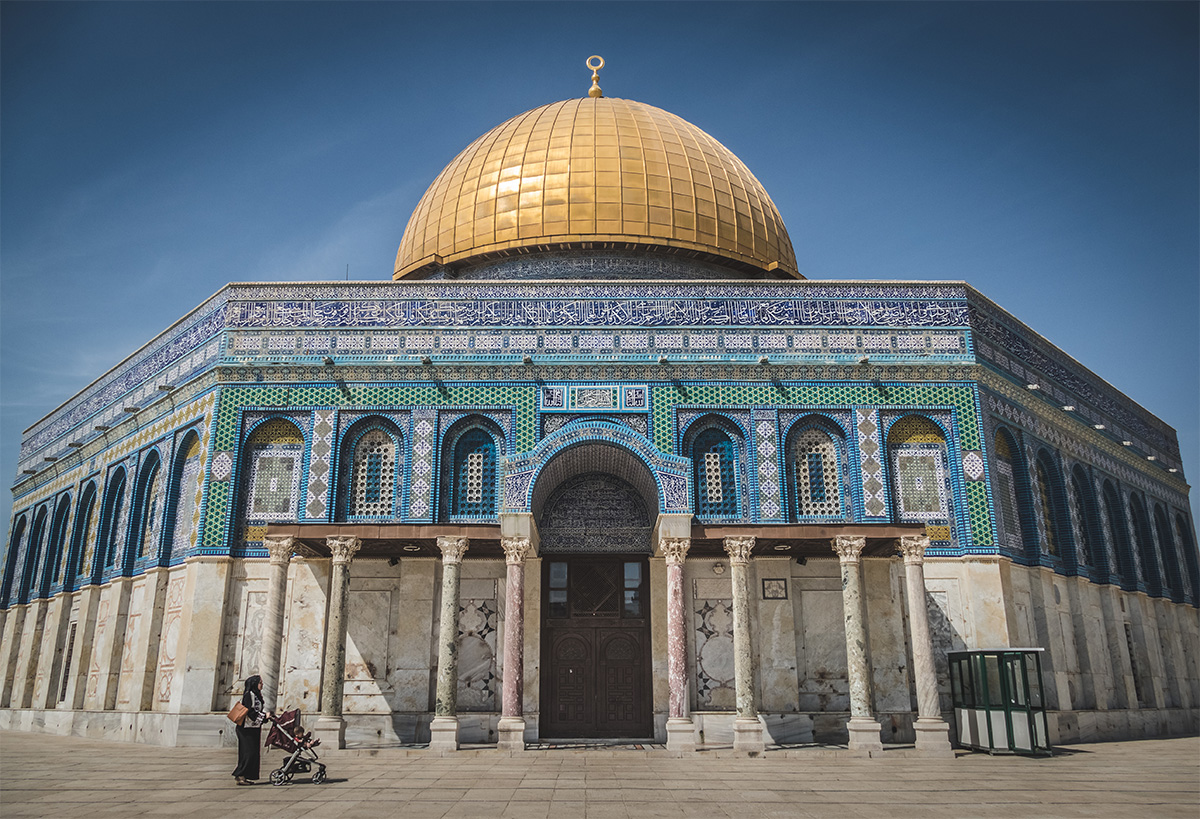Is Hell Real? Most World Cultures & Religions Believe So
Is hell real? Does it even exist? We may be surprised to find out that Christianity is not the only worldview that thinks so.
In fact, many cultures from throughout the world discuss a fiery place of judgement after death. Is this merely a coincidence? Or is this recurring theme evidence that hell is a real place?
Is Hell Real? The Different Names of “Hell”
Is hell real? Most cultures, religions and worldviews seem to think so. Throughout the entire world, in nearly every culture and religious sect, there is a proverbial “hell”. This concept of a fiery place of torment goes by many names depending on region and worldview. Here are just some of the most common names attributed to this concept of afterlife punishment:
- Christianity: Hell
- Old Testament: Sheol
- New Testament: Gehenna, Tartaróō
- Judaism: Sheol, Abaddon, Be’er Shachat, Tit ha-Yaven, Sha’are Mavet, Tzalmavet, Gehinnom, Azazel, Dudael, Tehom, Tophet, Tzoah Rotachat, Mashchit, Dumah, Neshiyyah, Bor Shaon, Eretz Tachtit, Haguel, Ikisat
- Islam: Jahannam
- Greek: Hades, Tartarus
- Buddhism: Avīci
- Hinduism, Buddhism, Jainism: Naraka
- Chinese: Diyu
- Zoroastrianism: “House of the Lie″
- Sumerian: Kur
- Aztec: Mictlan
- Inuit: Adlivun
- Mayan: Xibalba
- Breton: Anaon
- Celtic: Uffern
- Slavic: Peklo
- Finnish: Tuonela
- Bagobo: Gimokodan
- Indian: Kalichi, Naraka
- Daoism: Diyu
- Haida: Hetgwauge
- Swahili: Kuzimu
- Yanomami: Shobari Waka
Is Hell Real? Similar Archetypes in Different Cultures:
Christianity:
Let’s start with the most well known and widely discussed version of “hell”. Most modern concepts of hell come from the Biblical Christian worldview. However, many Christians don’t know know that hell is actually an umbrella term for multiple words.
Before the King James Version, there were three completely different words in the Greek manuscripts. These were later all translated into the same word “hell” for the KJV. Below are the three terms and their respective meanings:
-
- Sheol: Is an Old Testament term similar to the Greek “Hades”. Is described as “the place of the dead” or “grave”.
- Gehenna: Refers to the “Valley of Hinnom”, a garbage dump in Jerusalem. The valley was a place were people would burn their garbage, which meant there was always a fire there. Gehenna is used in the New Testament by Jesus Christ as a metaphor for this place of punishment.
- Tartaróō or Tartarus: This term is used only once in the New Testament in II Peter 2:4:
4 For if God spared not the angels that sinned, but cast them down to hell, and delivered them into chains of darkness, to be reserved unto judgment;
The word is used to parallel the term originally found in 1 Enoch, which described the place the fallen angels were subject to go for punishment.
Throughout the Septuagint, the New Testament writers replaced the Hebrew term “Sheol” with the Greek “Hades“. However the Jewish concepts of Sheol remained the same. Sheol or Hades was described as a place with no activity, completely cut off from God.
Judaism:
The Judaism concept of hell is obviously very similar to the Christian one, as it the predecessor to Christianity. As we saw earlier, the word used for hell in the Old Testament was “Sheol“. We can find a description of the Jewish view of hell in the book of Daniel 12:2:
2 And many of them that sleep in the dust of the earth shall awake, some to everlasting life, and some to shame and everlasting contempt.
However there are many different sects and denominations of Judaism which most people don’t know about. For example, there are more mystical versions of Judaism like the Kabbalah. There are also different Jewish scriptures not in the Bible canon which have different concepts and terms for hell. Texts like the Torah and the Talmud have different words and concepts of hell. Below are some of the Judaic terms:
- Sheol (Hebrew: שְׁאוֹל — “underworld“, “Hades“; “grave”)
- Abaddon (Hebrew: אֲבַדּוֹן — “doom”, “perdition”)
- Be’er Shachat (Hebrew: בְּאֵר שַׁחַת, Be’er Shachath — “pit of corruption”)
- Tit ha-Yaven (Hebrew: טִיט הַיָוֵן — “clinging mud”)
- Sha’are Mavet (Hebrew: שַׁעֲרֵי מָוֶת, Sha’arei Maveth — “gates of death”)
- Tzalmavet (Hebrew: צַלמָוֶת, Tsalmaveth — “shadow of death”)
- Gehinnom (Hebrew: גֵיהִנוֹם, Gehinnom — “valley of Hinnom“; “Tartarus“, “Purgatory“)
There also exist additional terms which were often used to refer either to Hell in general or to some concept of a region of the underworld:
- Azazel (Hebrew: עֲזָאזֵל, compd. of ez עֵז: “goat” + azal אָזַל: “to go away” — “goat of departure”, “scapegoat”; “entire removal”, “damnation”)
- Dudael (Hebrew: דּוּדָאֵל — lit. “cauldron of God”)
- Tehom (Hebrew: תְהוֹם — “abyss“; “sea”, “deep ocean”)
- Tophet (Hebrew: תֹּפֶת or תוֹפֶת, Topheth — “fire-place”, “place of burning”, “place to be spit upon”; “inferno”)
- Tzoah Rotachat (Hebrew: צוֹאָה רוֹתֵחַת, Tsoah Rothachath — “boiling excrement”)
- Mashchit (Hebrew: מַשְׁחִית, Mashchith — “destruction”, “ruin”)
- Dumah (Hebrew: דוּמָה — “silence”)
- Neshiyyah (Hebrew: נְשִׁיָּה — “oblivion”, “Limbo“)
- Bor Shaon (Hebrew: בּוֹר שָׁאוֹן — “cistern of sound”)
- Eretz Tachtit (Hebrew: אֶרֶץ תַּחְתִּית, Erets Tachtith — “lowest earth”).
- Haguel (Ethiopic: ሀጉለ — “(place of) destruction”, “loss”, “waste”)
- Ikisat (Ethiopic: አክይስት — “serpents”, “dragons“; “place of future punishment”)
Islam:
If you ask a Muslim, “is hell real?” they will conform as well. This Islamic concept is similar to the Judeo-Christian idea of a place below heaven filled with fire and torture.
The Qur’an, the Islamic holy book, speaks of a place called Jahannam. Jahannam is described as a fiery inferno with boiling water and other torment. This is a place reserved for the “enemies of Islam”. Those who don’t believe in God and Mohammed, or transgressors of the law of Allah.
Greek:
Classic Greek mythology talks of a place called Tartarus, or Tartaros, meaning “deep place”. In 400 B.C., Plato wrote in Gorgias that after death souls were judged and the guilty sentenced to punishment in Tartarus. Tartarus is described as both a deep, gloomy place.
However, the term Hades is more similar to the Old Testament Sheol. It is depicted as an abyss of immense torment and suffering. As we discussed earlier, this term was used in the Greek manuscripts of the Bible before the King James Version was translated.
Buddhism:
Most people probably can’t believe that Buddhism speaks of a hell as well. If you ask a practicing Buddhist, “is hell real?”, they will also affirm. Buddhism speaks of a “hell-like” realm called Naraka or Avīci. While the concept varies a little from the standard Christian one, it shares a lot of similarities.
Buddhism teaches that there are five realms of rebirth, each with differing levels of pleasure or pain. The higher worlds are more “heavenly” but the lower are “hellish”. Of these hell realms, Naraka or Avīci are the lowest levels. Legend has it that one of Buddha’s disciples, Devadatta, is said to have been reborn in hell for attempting to kill Buddha three times.
Avīci would most similarly parallel the Judeo-Christian archetype of hell. Avīci translates to “endless suffering”, but actually isn’t endless. Like all the realms of rebirth, the Hell realms only last until someone is reborn again. In Buddhist doctrine, the only way to escape the endless migration of rebirths is to achieve Nirvana. And nirvana can only be reached if initiates travel the Noble Eightfold Path, and ascend this cycle.
Hinduism:
Early Vedic religion actually did not have a concept of hell. However in later Hindu literature, like the law books and Puranas, additional realms are discussed. Of these realms is a hell-like world called Naraka, just like in Buddhism.
The law books describe Naraka also as a place of punishment for sin. It is a lower spiritual plane of existence, reserved for people with bad karma from their past life. Individuals are held in Naraka until the punishment for their bad karma is finished and balance is restored. In order to avoid this place, you must work to balance your bad karma with good karma.
Jainism:
When asking a Jainist “is hell real?”, they will respond similarly to the Hindu and Buddhist. Jainism uses the same term for Naraka to describe hell. However the Jainist Naraka differs from Abrahamic religions concepts in that souls are not sent there as a form of punishment. And just like in Buddhism and Hinduism, this place of judgement is not eternal.
Rather than spirits being sent to Naraka, they are born there. Like in Hinduism, the soul must endure the punishment for karma, until they can be reborn in a higher world. In Jainism, the Hells are organized into seven grounds or realms. Jainism asserts that souls are born into these Hells by sudden manifestation, depending on the level of negative karma. These realms are:
- Ratna prabha
- Sharkara prabha.
- Valuka prabha.
- Panka prabha.
- Dhuma prabha.
- Tamaha prabha.
- Mahatamaha prabha
Chinese folk:
In Chinese mythology, Diyu is the name given for the realm of the dead. Diyu is very similar to the Buddhist accounts of Naraka. It consists of a labrynth of underground floors and chambers where souls are sent to atone for their sins.
Diyu combines concepts of hell from Taoism and Buddhism mixed with traditional Chinese folk religions. Diyu serves as a sort of purgatory realm of punishment and place of renewal for the spirit. Typically in Chinese culture, the spirit is referred to as a “ghost”. Once the individual’s ghost is renewed they can then proceed to the next incarnation.
The number of levels in the Chinese hell differs depending on religious sect or denomination. Some narratives describe three to four “courts” of judgement, while others speak of as many as ten. Here there are ten judges known as the 10 Kings of Yama. Each court has trials dealing with different sins. For example, crimes of murder are held in one court while adultery in another.
According to most lore, the soul is eventually freed after it has atoned and repented. The ghost is released back into the world to be reborn. Souls may return as an animal or a poor person to endure more punishment.
Zoroastrianism:
If you ask a Zoroastrian “does hell exist?”, they may respond with a few different answers. Zoroastrianism teaches that there are multiple possibilities of punishment for evil. These include annihilation, purgation in molten metal, and eternal punishment. The main place of punishment being a realm called the “House of the Lie″.
The sacred Zoroastrian hymns, the Gathas, speak of the “House of the Lie″ as a place for people “that are of an evil dominion, of evil deeds, evil words, evil Self, and evil thought, Liars”. Zoroastrian eschatology states that the souls of the wicked are trapped in the “House of the Lie″ until the arrival of three different saviors. These three saviors show up at thousand-year intervals to save the world from evil.
Sumerian:
Sumerian eschatology also discuses a dark place of judgement. Legend spoke of a place named Kur, which was described as a dark cavern located deep underground. Souls trapped here were thought to be living “a shadowy version of life on earth”.
Kur differs from more conventional ideas of hell, in that a person’s life had no effect on their afterlife. In most other hell lore, the destination of the soul or severity of punishment depended on the actions of the individual during life. However in Sumerian tradition, all spirits are destined for Kur.
Ancient Egyptian:
Ancient Egyptians also seemed to ask the question “is hell real?”. Egyptian legend spoke again of the reoccurring theme of judgement after death. The understanding of the Egyptian view of hell comes from the following six ancient manuscripts:
- The Book of Two Ways (Book of the Ways of Rosetau)
- The Book of Amduat (Book of the Hidden Room, Book of That Which Is in the Underworld)
- The Book of Gates
- The Book of the Dead (Book of Going Forth by Day)
- The Book of the Earth
- The Book of Caverns
After death, Egyptian lore spoke of the soul facing judgement by forty-two divine judges. If the individual’s life was lead in accordance with the rules of the Goddess Maat, they were admitted into the heavenly reed fields. However if found guilty, the person would be given to Ammit, also known as the “devourer of the dead”. The soul would then be condemned to the lake of fire.
African:
The main African concepts of hell come from the Haida and Swahili mythology. The Haida version of hell is known as Hetgwauge, while the Swahili version is called Kuzimu. Both renderings contain the same common themes and archetypes as the conventional idea of hell.
Native American:
Most cultures or groups of Native Americans had their own versions of hell. If you were to beg the question “is hell real?”, you would get varying answers with the same general concepts. The main ideas of hell from Native Americans come from the Aztecs, Inuits and Mayans.
The Aztecs spoke of a place called Mictlan. Mictlan was the underworld of Aztec mythology, which consisted of nine different levels that the soul had to traverse. Each level contains various challenges and tests that the individual had to overcome.
In Mayan tradition, the underworld was known as Xibalba. Xibalba translates to “place of fear” and is ruled by Maya death gods. Various cave and pottery paintings depict this place of torment.
Inuits spoke of a place by the name of Adlivun. Adlivun translates to “those who live beneath us“. This refers to the spirits who reside in this underworld, depicted to be below the land and sea. Here the souls are purified, until they can eventually travel to the Land of the Moon.
Conclusion: Is Hell Real? What Makes Christianity Different from All Other Religions & Worldviews
So the question remains, is hell real? As we have seen, almost every culture in the world speaks of some place of judgement and punishment for sin. While each legend has different variations and nuances, we can observe a fundamental theme. Is it merely a coincidence that nearly every culture in the world speaks of a hell-like realm? Or perhaps this is more than just a coincidence and each culture, religion or worldview is attempting to describe a very real and dark world.
The Christians believe that in order to avoid this place, all you have to do is believe that Jesus Christ was the Son of God, he died on the cross for your sins, and that God rose him from the dead. This is in stark contrast to every other religion and worldview, which all claim salvation is through human accomplishment. Christianity sets itself apart from all the rest in declaring that salvation is through divine accomplishment, not human.
Next Article: Intelligent Design vs Naturalism







